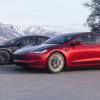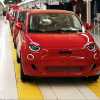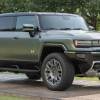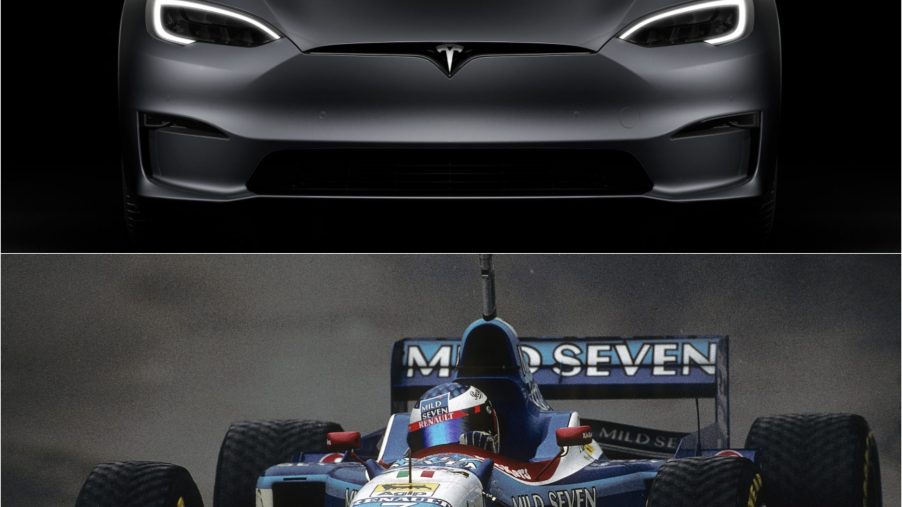
Watch A Tesla Model S Drag Race A 24-Year-Old Formula 1 Car
Tesla is no stranger to electric car speed. A base Tesla Model 3 can dash to 60 in just 3.1 seconds, thanks to that instant torque. EVs in general make pegging the petal to the floor more fun than ever before. But can this Tesla Model S hold its own against an actual F1 race car? It’s a comparison nobody asked for, but one we’re glad we got.
The Tesla Model S vs the Benetton B197
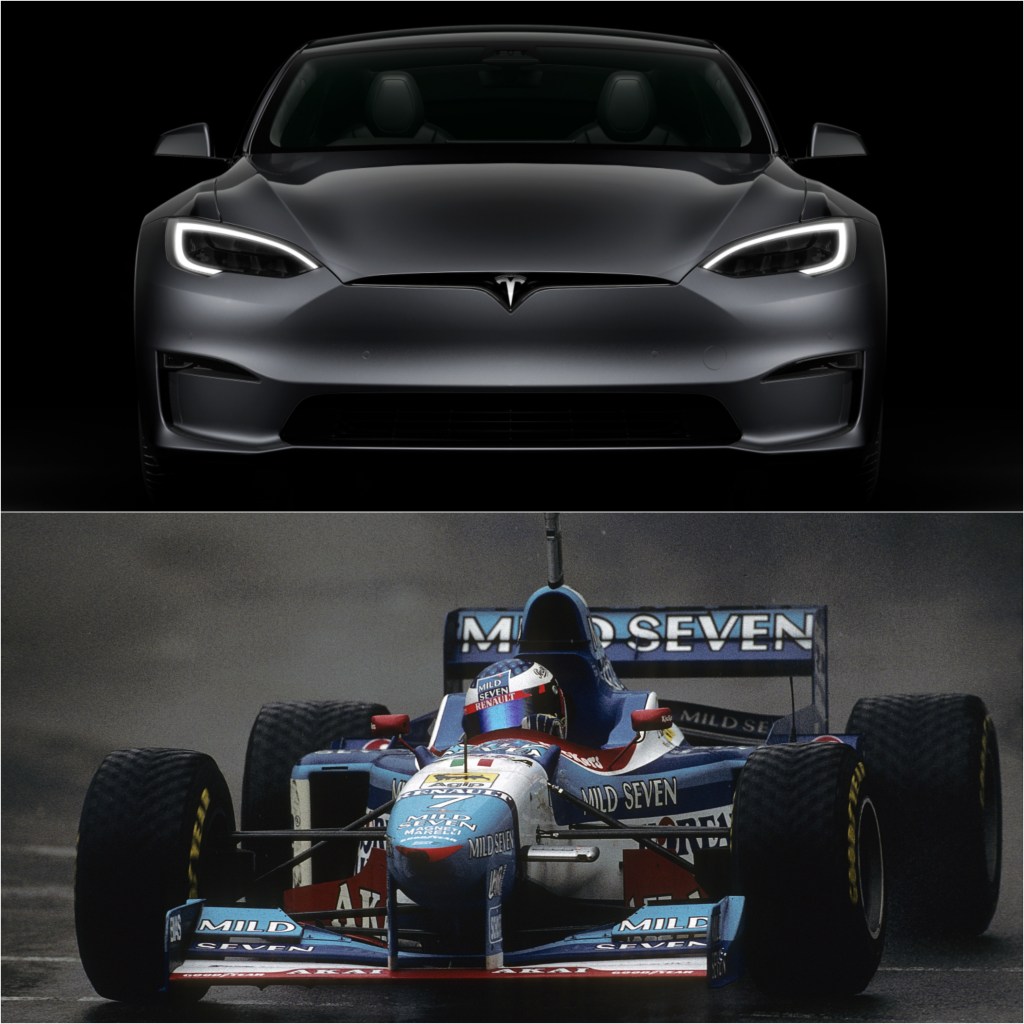
These two competitors represent two ends of a spectrum: a gas-powered straight-line screamer versus an environmentally conscious symbol of status. The only real comparison to be made is that each is powerful, but that power hits the tarmac in vastly different ways.
The Tesla Model S P100D has two electric motors, one in the front and one in the rear, that make a combined 671 hp. On top of that, 700 lb-ft. of torque is instantly available to the driver when they mash their foot down. It’s got five seats, dual climate control, and Bluetooth/WiFi capabilities. In other words, it’s fully loaded.
This Benetton B197 (raced in 1997) is the complete opposite. The 3.0L V10 engine makes 770 hp (100 more than the Tesla) and 383 lb-ft of torque (327 less than the Tesla). Seats? One. Air conditioning? The wind in your face. It’s a bare-bones, streamlined engine with a person strapped to it. And it’s wicked fast.
The Tesla is quicker off the line, but is no match for the Benetton
The two cars competed in four events, starting with a typical quarter-mile drag race. The Tesla Model S made the sprint in just 10.8 seconds, which is nothing to sneeze at. And for the first half of the race, the Tesla was well ahead of the F1 car. But once those fat racing tires got a grip, the Benetton propelled itself down the strip in just 9.6 seconds.
The same was true for the rolling quarter mile drag race. Both cars started at 40mph and raced to the finish. The Tesla pulled ahead, then fell back behind. The 0-60-0 test, where each driver accelerated to 60mph before slamming on the brakes, resulted in another Benetton win. Then there was the “moose test.”
A test designed to see how a car can evade an obstacle, cones laid out on the track forced the drivers to swerve. The Tesla failed to dodge the cones at 75mph, whereas the Benetton glided through them at 80. There’s no denying the Benetton, even in its old age, was built to race. But can you blame the Model S for giving its all and coming up short?
Can you really compare a Tesla to an F1 car?
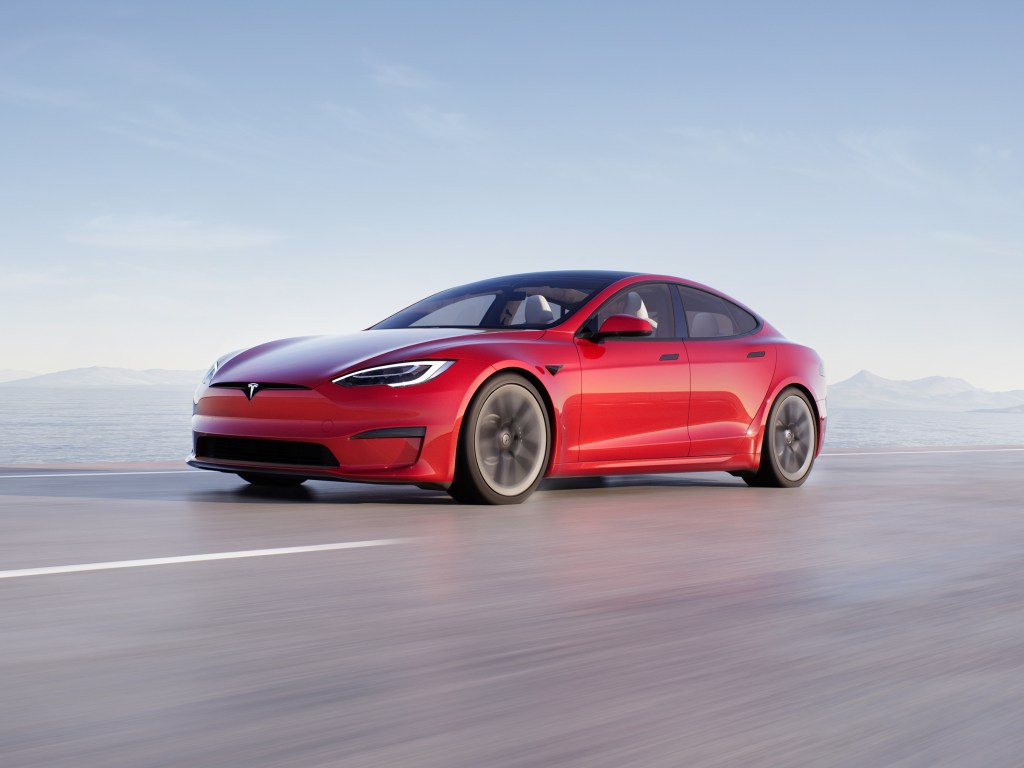
No matter how old, F1 cars were designed to be race cars. They don’t have five seats, they don’t have a trunk, and they don’t really care about emissions. The fact that the Tesla Model S could keep up with the Benetton is impressive in and of itself. You’re asking a luxury commuter car to do quarter miles and handling tests, and it went above and beyond what it’s supposed to do.
That being said, if you’re after an insane electric car that, theoretically, would’ve beaten the Benetton in a drag race, there’s the Tesla Model S Plaid. Having recorded quarter-mile times of just 9 seconds, it’d edge out a win against this racing machine and still carry all your friends.
Even still, some manufacturers recognize that you won’t be racing an F1 car every day, providing a plethora of budget options. But it’s fun to know that, as we electrify the future, some EVs will be able to hang with the big boys.
